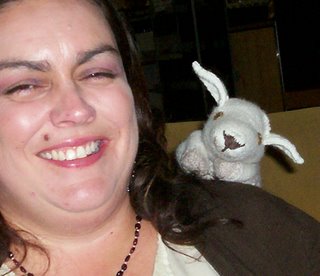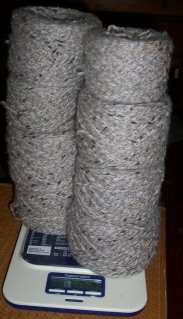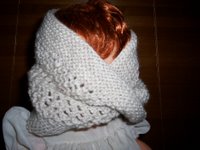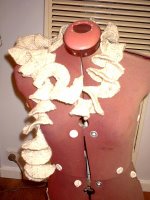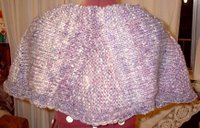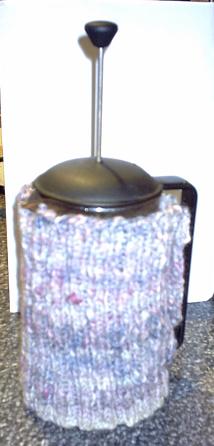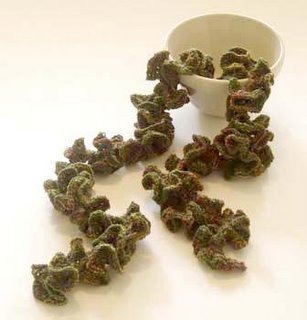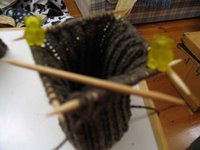In early 1848 with the intention of keeping a supply of labour, the British Government set up a scheme whereby free passages to New South Wales would be provided to female Irish orphans between the ages of 14 and 18 years. An Orphan Immigration Committee and a Board of Guardians were set up to care for their welfare and the first group of orphans arrived at Port Phillip during December 1848.
Two girls, daughters of Hugh McElroy, a Church of England parson (or a stonemason depending on which document you believe), and his wife Anne (nee Clarke) of Innerskillen, County Fermanagh arrived in company with 313 other female orphan passengers on board the Pemberton at Melbourne on the 14th of May 1849.
These young girls Mary Ann, a 16 year old house servant and her sister, Ellen, a 14 year old needle-woman, were immediately taken into service by Mr Mashan of Bourke Street Melbourne at annual salaries of 7 pounds and 5 pounds respectively. It was noted on their arrival that they were members of the Church of England and could read and write.
At the age of 19 and with the consent of her legal guardian, Mary Ann married William Jordan at St. Peters Anglican Church, Eastern Hill Melbourne on the 31st of August 1852. William, who was born at Aughton Common, Shropshire, England about 1822, marked the wedding register with a cross. Mary Ann signed her name.
William Jordan (who had the alias Middleton) had arrived on board the Anna Maria at Geelong on the 23rd of June 1848. He was a Pentonville convict who had been sentenced to seven years exile after an unsuccessful career as a shop breaker. Prior to being sentenced at the Central Criminal Court, London, in May 1846 he had been a printer. Before being transported he was trained as a carpenter.
William and Mary took up the Government's intention of providing labour with apparent enthusiasm having 13 children during their 43 year marriage. When William died of cancer on the 9th of August 1895 only five of those children survived him. One of them was Elizabeth Jane (Jinnie), born 29 May 1857, who married John Phillip Cockerill and became my g-g grandmother.
Mary Ann died of senile decay in her 90th year on the 31st of August 1923 . She was survived by 41 grandchildren, 59 great grandchildren and 5 great, great grandchildren. Mary Ann is buried with her husband at Creswick Cemetery, Victoria.
Her sister Ellen, who had arrived with Mary, married William Surridge and it is thought they had six children. She died on the 12th of October 1923 aged 87 years.
Mary Ann was described as a deeply religious person who had a dislike of Catholics and spoke of her early childhood in Ireland as one of continually digging peat in the bogs.
In her last years, Mary Ann would walk along fence lines remonstrating with the posts which she thought were Catholics and attacking them with her walking stick. Another contemporary report says that she was always talkative and even as an old woman quite capable of forthright criticisms. One of her granddaughters told a story that whilst she was discussing that favourite subject of the aged, the rising generation, she was heard to say "the trouble with young women these days is that they like the pleasures of the bed, but they don't want the children".

Apart from many offspring, Mary Ann left very little in the way of material goods. We have the wooden trunk which she was issued by the British Government for her personal possessions when she left Ireland. My grandfather got it from a Caddy cousin who'd been using it to breed ferrets in. It is this that speaks to me the most about Mary Ann's legacy - practicality, thrift, forthrightness and fortitude.
A moving memorial to the Irish Famine Orphans is at Hyde Park Barracks in Sydney.

In November, an ABC film crew interviewed Dad and me about Mary Ann for a Christmas special on the Irish in Australia. As a part of the interview I was filmed knitting and walking up Mount Taylor in 30C deg + heat . That bit of footage did not go to air.
At the time of the interview, we were invited to be part of a Christmas Day Mass in Sydney at the Hyde Park Barracks to celebrate the Irish in Australia, particularly the famine orphans. I was immediately siezed with the desire to knit a garment to wear; partly because the only summer frock I own is sleeveless and I didn't want to attend Mass with my arms uncovered and partly because I wanted to commemorate Mary Ann in my own way.
What was called for was something that was loose, light but covering and that would go with my grey and black frock. In stash was16 x 50g balls of black Panda Coral 8ply cotton/acrylic blend (51/49%) purchased at St VdeP for $10 in March '06. More than enough for a shawl of some description, I reckoned. Could I find a pattern I liked and which matched my yardage, tension and size requirements? Could I, feck! The only thing for it was to concoct something myself.
I give you the the Mary Ann wrap, which celebrates Mary Ann McElroy's qualities of thrift, practicality and fortitude. It's also rather pretty and is enveloping and comforting.















